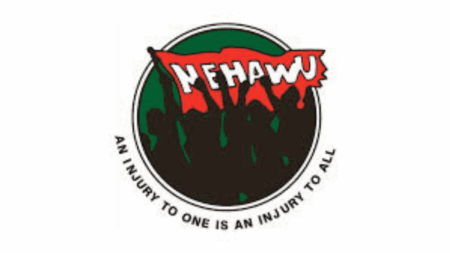In today’s workplace, email is one of the most common ways to communicate. Writing a professional email is crucial for making a good impression, conveying your message clearly, and ensuring that the recipient understands your intent. A well-crafted email can also enhance your credibility and foster positive professional relationships.
How to Write a Professional Email (with Examples)
This comprehensive guide will walk you through the key components of a professional email, providing tips and examples along the way.
1. Email Structure Overview
A professional email typically follows a basic structure:
- Subject Line
- Salutation
- Body (Introduction, Main Content, Conclusion)
- Closing Line
- Signature
2. Subject Line
The subject line is the first thing the recipient sees, so it’s essential to make it clear and relevant. A vague or misleading subject line can result in your email being ignored or even deleted.
Tips:
- Be concise but informative.
- Avoid using all caps or excessive punctuation.
- Ensure the subject line reflects the content of the email.
Examples:
- “Meeting Request: Q1 Marketing Strategy Discussion”
- “Follow-up on Your Application for Marketing Manager Position”
- “Important: Deadline Extension for Quarterly Report Submission”
3. Salutation
Your salutation sets the tone for the email. It’s important to choose the right greeting based on your relationship with the recipient and the level of formality required.
Common Salutations:
- Formal: “Dear Mr./Ms./Dr. [Last Name],”
- Less Formal: “Hello [First Name],” or “Hi [First Name],”
- Informal (for close colleagues or familiar contacts): “Hey [First Name],”
When to Use:
- Formal Salutations: When addressing someone you don’t know well, such as a client, supervisor, or external colleague.
- Less Formal: When corresponding with someone you have an ongoing relationship with, such as a coworker you interact with regularly.
Recommended for you: Step-by-Step Guide to Using the ESSA Portal for Government Jobs
4. Email Body
The body of your email should be clear, concise, and focused. You want to convey your message while maintaining professionalism. The body typically has three parts: introduction, main content, and conclusion.
a. Introduction
Start with a polite greeting or an opening sentence that sets the context. If this is a reply, acknowledge the previous message.
Example Introduction:
- “I hope this email finds you well.”
- “Thank you for your email regarding [Topic].”
b. Main Content
This is the core of your message. Keep your points clear and direct. Use short paragraphs, bullet points, or numbered lists to break down complex information.
Example Main Content:
- “I am writing to request a meeting to discuss our upcoming project deadlines. Please let me know your availability for the next week so we can schedule a time.”
- “As per our earlier discussion, I have attached the updated report for your review. Kindly provide any feedback by the end of the week.”
c. Conclusion
Close the email with a courteous statement that reinforces your request, offers assistance, or encourages a response. Mention any follow-up actions or deadlines if necessary.
Example Conclusion:
- “I look forward to your response.”
- “Thank you for your time and consideration.”
- “Please feel free to reach out if you need further clarification.”
5. Closing Line
Your closing line should reflect the tone of your email. In formal emails, use a professional sign-off, while informal emails can be more casual.
Formal Closings:
- “Sincerely,”
- “Best regards,”
- “Kind regards,”
- “Yours faithfully” (if you don’t know the recipient’s name)
Informal Closings:
- “Best,”
- “Cheers,”
- “Thanks,”
Read more: Free Apps to Create a Professional CV for 2025
6. Signature
Include your signature at the end of your email, particularly for professional or formal correspondence. It typically includes your full name, job title, company name, and contact information.
Example Signature:
Best regards,
[Your Full Name]
[Your Job Title]
[Company Name]
[Phone Number]
[Email Address]
7. Proofreading and Tone
Before sending your email, carefully proofread it for grammar, spelling, and punctuation errors. Make sure the tone is appropriate for the recipient. Avoid using slang or overly casual language unless the context allows it.
8. Examples of Professional Emails
Example 1: Job Application Email
Subject: Application for Marketing Manager Position
Email Body:
Dear Mr. Smith,
I hope this email finds you well. I am writing to express my interest in the Marketing Manager position at XYZ Company, as advertised on your website. I have attached my resume and cover letter for your consideration.
I believe my background in digital marketing, coupled with my experience leading successful campaigns, makes me a strong candidate for this role. I would welcome the opportunity to further discuss how my skills align with your team’s needs.
Thank you for considering my application. I look forward to the possibility of working with you.
Best regards,
Jane Doe
Marketing Specialist
[Phone Number]
[Email Address]
Example 2: Request for a Meeting
Subject: Request for a Meeting to Discuss Q2 Marketing Strategy
Email Body:
Hi John,
I hope you're doing well. I would like to schedule a meeting with you to discuss our Q2 marketing strategy and align on key priorities for the upcoming quarter. Please let me know your availability for this week or next, and I will send a calendar invite.
Looking forward to our conversation.
Best regards,
Sarah Lee
Marketing Manager
ABC Company
Example 3: Follow-up Email
Subject: Follow-up on Marketing Proposal
Email Body:
Dear Ms. Harris,
I hope you are doing well. I wanted to follow up on the marketing proposal I sent last week. Please let me know if you have any questions or need additional information to proceed.
I look forward to hearing from you and hope to move forward with the next steps.
Best regards,
Michael Tran
Senior Marketing Executive
XYZ Inc.
9. Final Tips
- Be concise: Avoid unnecessary details that could make the email too long or hard to read.
- Use professional language: Even if you have a friendly relationship with the recipient, keep the language respectful and professional.
- Respond promptly: Timely responses show professionalism and respect for the recipient’s time.
- Mind your attachments: Always mention any attachments in the body of the email and ensure they are relevant and properly named.
By following these steps and using the examples provided, you can effectively write professional emails that convey your message clearly and maintain a high level of professionalism.






